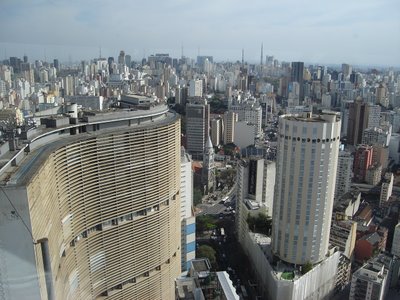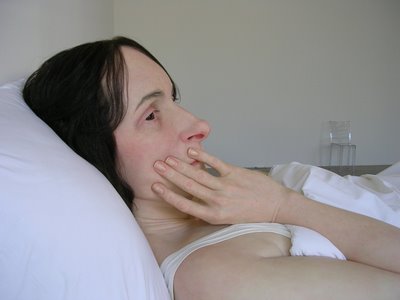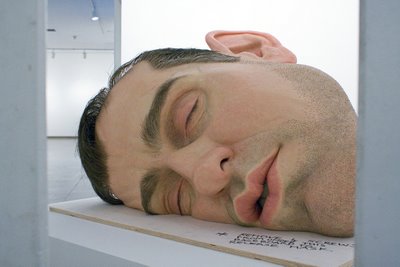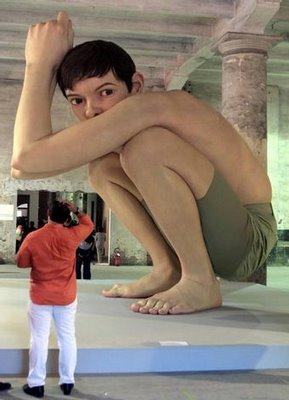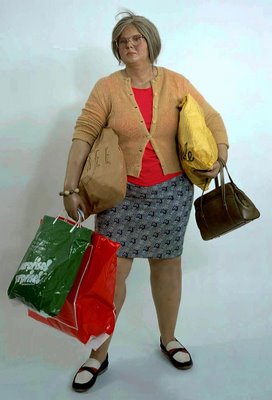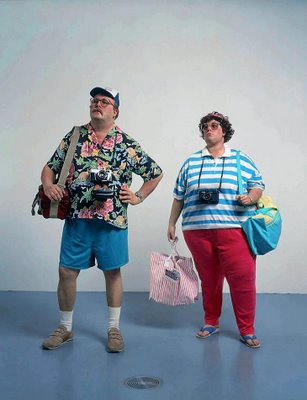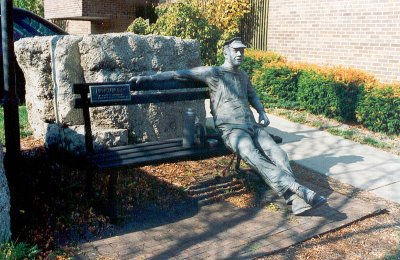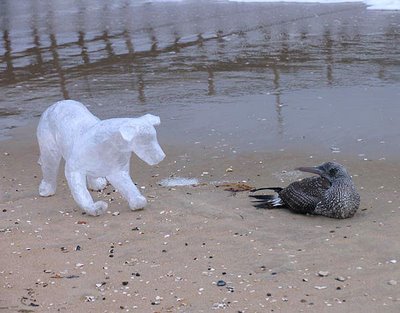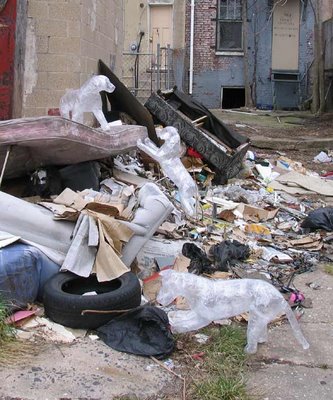I found an amazing, awesome site, Wooster Collective, founded in 2001 by Marc and Sarah Schiller and dedicated to showcasing and celebrating ephemeral art placed on streets in cities around the world. You can read the Marc Schiller interview talking about Street Art and Outsider Art, here and here. Through Wooster Collective I found another great site of the artist Mark Jenkins. Today I like to share some of his amazing street works.
“Mark Jenkins, a world-renown street artist has been creating these unique works of art across the globe for the last several years. Based in Washington DC, Marks' process of cling wrap to packing tape is documented on the Tape Sculpture website. The pieces are installed on the street, in nature, for gallery installations, and even as part of a High School project in Elwood, Kansas. Recently, Mark branched out into clothed tape sculptures which gives the pieces an eery yet comical emptiness.” (information from Jungle Life San Francisco)
Praia de Copacabana, Rio de Janeiro, Brazil
 Rua Pompeu Loureiro, Copacabana, Rio de Janeiro, Brazil (2003)
Rua Pompeu Loureiro, Copacabana, Rio de Janeiro, Brazil (2003)"In the words of Mark Jenkins: Making casts with tape is a trick I figured out how to do in the fourth grade but didn't make a full-time project out of it until 2003 when I started doing street and gallery installations with the Tape Men in Rio de Janeiro. "( information from Jungle Life San Francisco)

Mark Jenkins series "Embeds", the sculptures are made of tape and then clothes are added. You can see the video on Wooster Collective, and it’s great fun to see how people react to them.







Mark Jenkins street art
Update 1: The first experience in plastic wrap and tape made by Mark Jenkins was made in Rio de Janeiro, Brazil, in 2003. Take a look in this Wasington Post's interview.
Update 2: My friend and painter Nancy Bea gave me an interesting information about the work of the artist Duane Hanson (January 17, 1925 - January 6, 1996). He was an American post-modern sculptor known for his life-sized photorealistic works of humans, cast in various materials, including polyester resin and fiberglass. Worth to take a look here and here.
Click on photos to enlarge


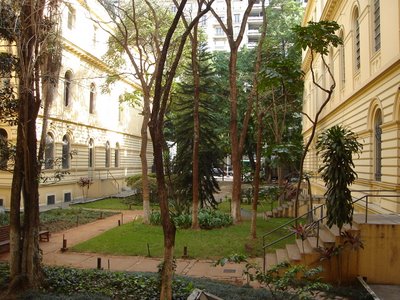
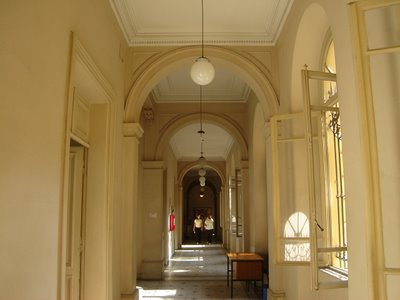 Instituto de Educação Caetano de Campos (School)
Instituto de Educação Caetano de Campos (School)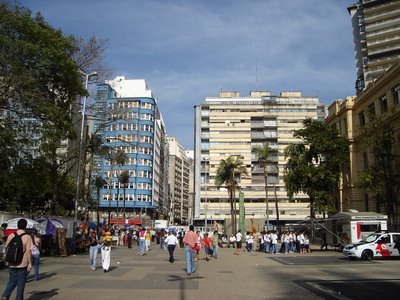 Praça da República (Square)
Praça da República (Square) You see in this panoramic photo the Escola Caetano de Campos (School), Itália Building, Copan Building and Hilton Building, in the center of the city. Photo by www.fotosedm.hpg.ig.com.br
You see in this panoramic photo the Escola Caetano de Campos (School), Itália Building, Copan Building and Hilton Building, in the center of the city. Photo by www.fotosedm.hpg.ig.com.br 

